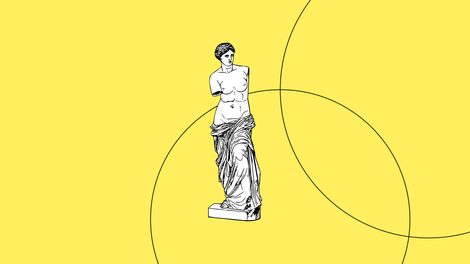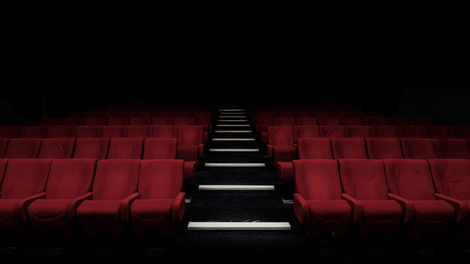Alphonse Mucha and the history of Art Nouveau
Life and its changing aesthetics unfold in periods and cycles.
Just as fashion, music and language, and general everyday aesthetics change throughout the decades (the 90s, 2000s, 2010s f.ex.), the periods of art history are equally subject to changes and cycles.
One of the most popular art and style periods of the 20th century of the overarching period of Modern Art is Art Nouveau. The Art Nouveau artistic movement was all the rage during the Belle Epoque period from about 1890 to 1910. It was the art period between Historism and Modern Art.
Jumpstart your ideas with Linearity Curve
Take your designs to the next level.
What is Art Nouveau?
Art Nouveau as a design style originated in Belgium and then spread like a wildfire across Europe and even swept across the pond to America.
It truly became an international style. The term Art Nouveau was first coined in the 1880s in the Belgian journal L'Art Moderne to describe the work of Les Vingt, twenty painters, and sculptors seeking reform through art. The name was popularized by the “Maison de l'Art Nouveau” ("House of the New Art"), an art gallery that opened in Paris in 1895.
In England, the style’s ultimate trailblazers were the Aestheticism of the illustrator Aubrey Beardsley who emphasized the expressive quality of the organic line, and the Arts and Crafts movement of William Morris, who entrenched the importance of a vital floral style in the applied arts. On the European continent, Art Nouveau was influenced by experiments with expressive lines by the painters Paul Gauguin and Henri de Toulouse-Lautrec.

The movement was known as “Jugendstil” in Germany, “Sezessionsstil” in Austria, “Stile Floreale” in Italy, in Holland as "Nieuwe Kunst" and as “Modernismo” in Spain.
In England, Art Nouveau was also known as the “Modern Style”, and American Art Nouveau was dubbed the “Tiffany Style”. (Designers such as Louis Sullivan and the American glass designer Louis Comfort Tiffany shaped this movement in the States.)

Art Nouveau was a rebellion and counter-movement against the sharp and cold lines of the stiff historian art period which dominated art education from the 17th to the 19th century and the dire living conditions and soulless, mass-manufactured products of the industrial revolution.
There are Victorian influences in Art Nouveau, but in a more simplified representation. The excess of the Victorian era was toned down to its essence. Many past art movements were strongly influenced by religious icons, but Art Nouveau sent a different message: that the most spiritual experiences were to be had in the natural world. Darwin’s "Origin of Species" (published in 1859) was a key factor in this shift away from the church and into viewing nature as an artist.
Within the classic academic art system, the art disciplines of sculpture and oil painting were considered superior, while the decorative arts and crafts were considered of lower importance and value. This negligence of craftsmanship was reflected in the poor quality and appearance of industrially manufactured, cheap commodities at that time.
Art Nouveau, with its eclectic style and movement, elevated the arts and crafts and the decorative commercial arts into a superior art form. The production of utilitarian objects and the associated crafts were also elevated to an art form, as well as architecture, furniture, fashion, tableware, jewelry, and the commercial printing of cards and posters.
Ready to create brand assets that pack a punch?
Visit our Academy for free art design courses.
High-quality craftsmanship was reborn under Art Nouveau, and every usable object of daily life was created and revered as an art form. It emphasized creating functional pieces that were as beautiful as they were practical. The artists, designers, and decorative painters sought to achieve a spiritually uplifting Gesamtkunstwerk ("total work of art") that would unify all the disciplines of art and craftsmanship to a common style, to uplift and inspire the residents.
Another important aspect of the Art Nouveau Style was the return to nature, the female form, floral decoration, and the replication of sensual flowing forms in art. Objects were created with decorative curved lines, peacock feathers, and floral ornaments inspired by nature.

The emphasis on flowing contours had priority over color, which was commonly represented with hues such as muted greens, browns, yellows, and blues.
For this style, the mocking term "Style Nouille," or “Noodle Style” was often used, which alludes to the noodle-like hair ornaments worn by many of the women depicted on objects and posters and the curved vegetal forms.
Art Nouveau, with its wide variety of floral forms, turned away from historicism and created something completely new. In this movement, the influence of Japanese woodblock prints is very obvious, especially in the monochromatic areas and the way the images are designed without perspective.
This phenomenon was later coined as Japonism. This influence was mainly induced by the Japanese woodblock prints (Ukiyo-e) that comprised floral, bowed forms, and whiplash curves. This influence began after the trading rights were established with Japan in the 1860s.

There is also a sense of wabi-sabi in Art Nouveau, which is a Japanese concept that means perfect imperfection.
Wabi-sabi emphasizes that nature is not perfect and that its elegance and sensual presence should be celebrated rather than controlled with perfection or industrialization, cycles of birth, life, decay, and death are an integral part of Art Nouveau.
Many famous pieces from this period have a sense of obscurity to them. Vine-like arrangements were combined with shadow figures that appeared in the backdrop of the painting. Creatures of the night like black cats and bats were celebrated.

Suddenly, darkness was recognized as alluring and beautiful, the mysteries of nature were celebrated.
Long ringlets of hair and fresh skin are featured in paintings, soft velvet fabrics and lush curves were used to embellish furniture. The women of Art Nouveau masterpieces were no virginal angels; they had an air of rebellion and allure. They were clothed in loose gowns or draped fabric and adorned with nature-imitating headdresses. The separation of high art and commercial art was surmounted.
Mucha, master of the poster
Alphonse Mucha, the Czech painter, poster artist, graphic designer, illustrator, amateur photographer, and craftsman, was one of the most influential figures of the Art Nouveau movement. Art Nouveau was even called "Le Style Mucha" in Paris. With a palette of muted pastels, the artist drew beautiful women posed against botanical backdrops. He celebrated Art Nouveau aesthetics with floral lines, decorative elements, and sensual natural forms.
Born Alfons Maria Mucha on the 24th July 1860 in today´s Ivančice, Czech Republik, his childhood was shaped by the influencing factors of his Catholic upbringing, his interest in music, and his artistic talents. Mucha began his artistic career as an autodidact. After his schooling and after a short stint for educational purposes at the Academy of Fine Arts in Munich from 1885 to 1887, Mucha made the bold decision to relocate to Paris in 1888.
While living in Paris, Mucha shifted his focus from painting to magazine illustration. With the Industrial Revolution advancing, printing techniques became more refined. By the early 19th century, the streets of Paris were covered with posters. The medium gained popularity and respect and was used as a means of commercialization.
This period solidified the importance of reproducible art and 2D design in advertisement.
"With lithography, the technique of reproduction reached a fundamentally new level. The much more flush process, which distinguishes the application of the drawing on a stone from its notching in a block of wood or its etching in a copper plate, gave graphic art for the first time the possibility to bring its products to the market not only in masses (as before) but in daily new designs. Lithography enabled graphic art to accompany everyday life in an illustrative way. It began to keep pace with printing. In this beginning, however, it was already outstripped by photography a few decades after the invention of lithography."
- Walter Benjamin, "The Work of Art in the Age of Mechanical Reproduction
In the 1890s, Jules Chéret, a French artist known as the "father of the modern poster," introduced color lithography. Using new techniques and technologies, artists such as Henri de Toulouse-Lautrec, Georges de Feure, and Alfons Mucha excelled in the medium, which established itself as an effective advertising medium and attractive art form. Mucha was also an amateur photographer and used his photographs as templates for his color lithography prints.
As a result, the difference between mass production and fine art became blurred, and Art Nouveau's aesthetic of floral motifs quickly became an important part of everyday life. Mucha used lithography as the printing technique for his posters. Some of his posters were produced as sets, like The Four Seasons.

The Sarah Bernhardt factor
Plagued by financial constraints, Mucha's big break came in December 1894, when legendary actress Sarah Bernhardt, at the height of her fame, was looking for an artist to design a new poster for the play of Gismonda in which she was starring.
Maurice de Brunhoff, the managing director, commissioned Mucha, a passionate theater lover, at the last minute to design the advertisement, which the artist realized as an oversized poster with romantic motifs, swirling silhouettes, and mosaic patterns. The artwork, distributed throughout Paris, made Alfons Mucha a well-known artist and gained him a longtime contract with Bernhardt.
The poster was about two meters high. Bernhardt was depicted in the costume of a Byzantine noblewoman, with an orchid headdress and floral stole, holding a palm branch.
One of the innovative features of the posters was the ornate rainbow-shaped arch behind the head, which looked almost like a halo and drew attention to her face. This feature appeared in all of his future theater posters. The only background decoration was the Byzantine mosaic tiles behind her head. The poster featured excellent craftsmanship and delicate pastel colors, unlike the typical bright-colored posters of the time. The top of the poster, with the title, was composed of ornaments and balanced out the bottom of the poster, where the essential information was given in the shortest possible form: just the name of the theater.

The incredible success of the Bernhardt posters brought Mucha commissions for advertising posters and made him a famous designer overnight. He designed posters for JOB cigarette papers, Ruinart Champagne, Lefèvre-Utile biscuits, Nestlé baby food, Idéal Chocolate, the Beers of the Meuse, Moët-Chandon champagne, Trappestine brandy, and Waverly and Perfect bicycles. He even collaborated with the jeweler Fouquet.
In 1896 Mucha designed a poster for Sarah Bernhardt as Lady of the Camellias, which is often viewed as one of the highlights of Art Nouveau poster art.

In 1897, Mucha produced one of his most important works of illustration: the 134 color lithographs for Ilsée, Princesse de Tripoli, a French fairy tale by Robert de Flers. It is one of the most important works of Art Nouveau book illustration.

In his later period, Mucha broke away from Art Nouveau and from 1911 to 1928 created a monumental epic on the history of the Slavic peoples, the Slavic Epic; a cycle consisting of 20 huge paintings.
Financially independent, he lived with his wife and two children in a castle north of Prague. The Art Nouveau style trend fizzled out for the most part before the First World War, making room for the emergence of the sharper, geometric forms and more industrial straight lines of Art Deco in the 1920s.
Get creative with our ready-to-use templates.
Linearity Curve offers templates for every social media platform and various use case templates for posters, business cards, slides, app store screenshots, and more.
The return of Art Nouveau in the 60s and 70s
The influence of Art Nouveau reverberated throughout the poster art of the sixties and seventies. Art Nouveau designs influenced the feminine and organic forms like flowers and peacocks of the psychedelic movement of the 1960s and 70s.

Psychedelic artists often copied Art Nouveau art pieces in posters for bands like The Grateful Dead f.ex. Soft, flowing shapes and lettering also made a comeback, but this time with a little bit more edge and with color schemes that were not subdued but resembled an acid trip.
Mucha's legacy
Even today, Mucha's legacy lives on.
The contemporary award-winning artist Echo Chernik is influenced by the undulating lines of Art Nouveau and transports the form language to our current times.

Sometimes you even stumble across talented contemporary artists like Val Sannais that combine fan art for BTS brilliantly with the curved ornaments from Alphonse Mucha.


Did we inspire you by transporting you into the world of Art Nouveau? Draw your own Art Nouveau posters and share your masterpieces with us on our social media channels and in our Community Gallery.
Jumpstart your ideas with Linearity Curve
Take your designs to the next level.
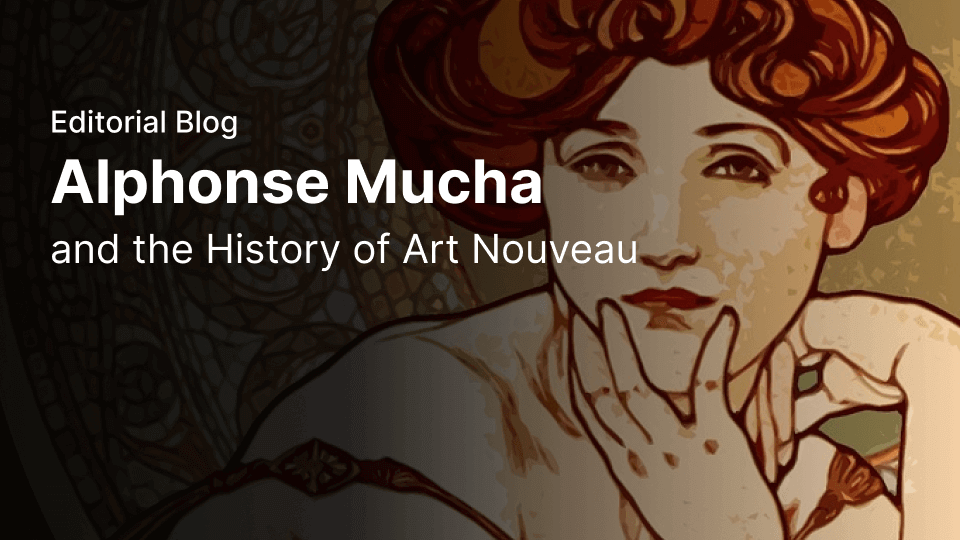
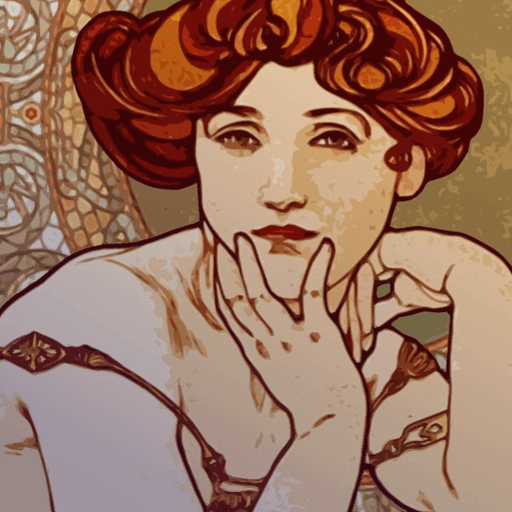
Share this!
Marion Gerlinger
Marion is a contributing writer to the Linearity Blog.
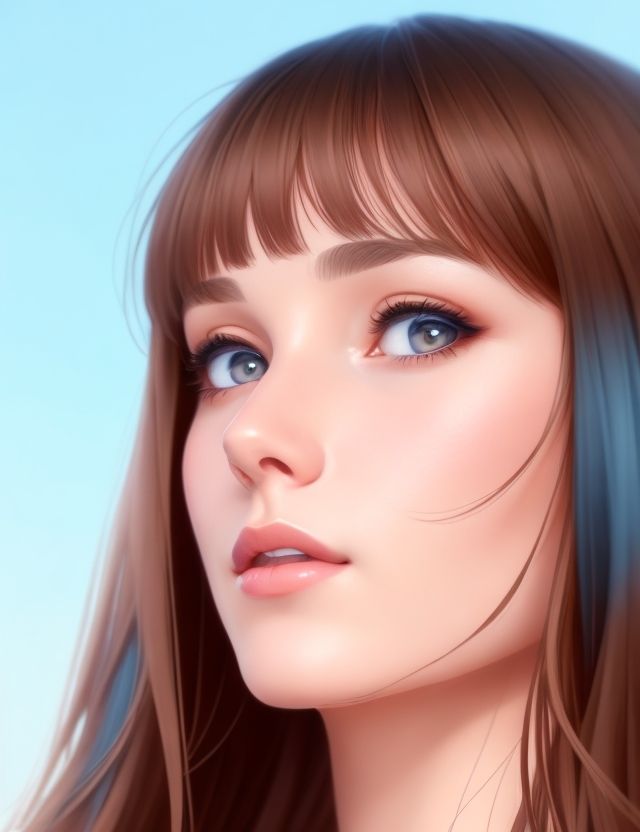

:quality(75))
:quality(75))



:quality(75))
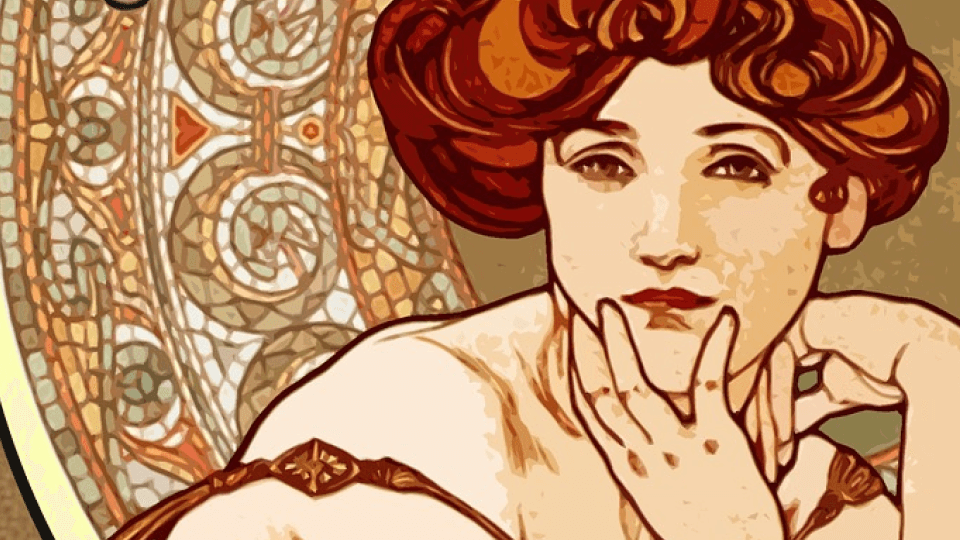
:quality(75))
:quality(75))
